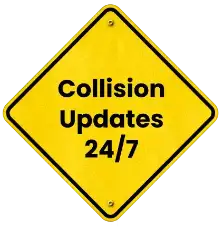
Truck Driver Fatigue on I‑20


Interstate 20 is one of the busiest highways in the southern U.S., linking major cities and serving as a critical route for commercial trucks. With thousands of big rigs traveling along this stretch every day, safety is a serious concern. One of the most dangerous factors behind accidents on I-20 is truck driver fatigue. Long hours on the road, tight deadlines, and irregular sleep schedules often leave drivers exhausted, impairing their ability to drive safely.
Fatigue affects much more than just physical tiredness; it also impacts a driver’s judgment, reaction time, and overall awareness. A fatigued truck driver might drift between lanes, fail to notice slowing traffic, or misjudge distances, all of which can lead to severe accidents. On a high-speed highway like I-20, where passenger vehicles are sharing the road with massive trucks, the margin for error is razor-thin. Even a brief lapse in judgment can lead to a multi-vehicle crash.
I-20’s long, rural stretches also make the drive monotonous, which can make fatigue worse. With fewer places to stop or keep the mind engaged, drivers may struggle to stay awake. Add the pressure of tight delivery schedules, and many truckers end up pushing themselves beyond the point of safe driving. This mix of factors makes fatigue-related crashes a serious issue on I-20. This highlights the urgent need for better regulations, improved rest policies, and greater awareness of the dangers of driving while tired.
The Consequences of Driver Fatigue
Driver fatigue can have serious, far-reaching consequences for everyone involved in a crash, often leading to life-altering outcomes. When a driver is fatigued, their cognitive functions are impaired, which significantly slows reaction times. This means that when a dangerous situation arises, like an unexpected obstacle, another vehicle braking suddenly, or a sharp curve in the road, a tired driver may not react quickly enough. The delay in response can make the difference between avoiding an accident and causing one.
Fatigue also affects a driver’s judgment and decision-making abilities. When a driver is well-rested, they are more likely to assess risks correctly and make split-second decisions that ensure their safety and the safety of others on the road. However, fatigue diminishes this ability, which leads to dangerous errors.
A tired driver might misjudge the distance between their vehicle and another and cause a rear-end collision. They might also fail to notice road signs or traffic lights. This increases the risk of running a red light or failing to stop at a stop sign. These lapses in awareness are especially dangerous at high speeds or in busy traffic, where the potential for harm is greater.
One of the most common and deadly consequences of driver fatigue is falling asleep at the wheel. When a driver is so exhausted that they can no longer stay awake, the risk of veering off the road or into oncoming traffic dramatically increases. In these cases, the crash can be catastrophic and lead to severe injuries or fatalities. The chances of a truck, car, or other vehicle being involved in a collision also increase significantly when the driver is unable to maintain control due to drowsiness.
The physical consequences of these accidents can be devastating. Victims often suffer from broken bones, spinal cord injuries, head trauma, or even permanent disability.
The emotional toll can be just as severe, with families left to cope with the loss of loved ones or to care for injured family members who may never fully recover. On top of that, the financial burden of medical bills, lost wages, and rehabilitation can be overwhelming for those affected.
In addition to the immediate dangers of a fatigued driver on the road, there are broader implications for society. Accidents caused by driver fatigue lead to increased insurance premiums, higher healthcare costs, and the loss of productivity due to injuries or deaths.
The strain on emergency services, hospitals, and legal systems can also be significant. Fatigue-related accidents ultimately take a toll not just on the individuals involved but on the entire community. This shows the importance of addressing this issue before it leads to even more devastation.
How to Prevent Truck Driver Fatigue
Truck driver fatigue on Interstate 20 is a serious safety concern, but several strategies can help prevent it.
Drivers should take regular breaks every two hours or 100 miles to rest and recharge. Ensuring 7-8 hours of sleep before starting a trip is crucial, along with maintaining a consistent sleep schedule to stay alert.
Avoiding excessive caffeine late in the day is important, as it can disrupt sleep patterns. For solo drivers, sharing driving duties with a co-driver or utilizing sleeper cabs during breaks offers an opportunity to rest.
Drivers should also recognize the signs of fatigue, such as yawning, difficulty focusing, or drifting between lanes, and stop immediately when they feel tired. Planning routes in advance with rest areas and truck-friendly facilities ensures drivers can take breaks when needed.
Employers should educate drivers on the importance of rest and safety to help reduce fatigue-related accidents on the road.
How an Experienced Lawyer Can Help
If you’ve been involved in a truck accident on Interstate 20, a lawyer can be a valuable resource in helping you navigate the complex legal process and secure the compensation you deserve.
Truck accidents often involve multiple parties, including the truck driver, the trucking company, and potentially third-party companies responsible for maintenance or cargo. A lawyer can investigate the accident, gather evidence, and identify all responsible parties.
An experienced truck accident lawyer understands the regulations governing commercial trucking. These include hours of service laws and maintenance requirements, which can be critical in proving negligence. They can work with accident reconstructionists and other experts to build a strong case.
Additionally, a lawyer can help you handle insurance companies, ensuring you don’t settle for less than you deserve. They can also represent you in court if needed. An attorney will advocate for your rights and help you secure compensation for medical bills, lost wages, pain, and suffering.
Contact a Truck Accident Attorney
If you or a loved one has been involved in a truck accident on Interstate 20, we understand the physical, emotional, and financial toll it can take. You don’t have to face this difficult time alone. A skilled I-20 truck accident lawyer can guide you through the legal process with peace of mind. We are here to listen, support you, and help you get the justice you deserve. Reach out today for a free, no-obligation consultation, and let us help you through this challenging time.
